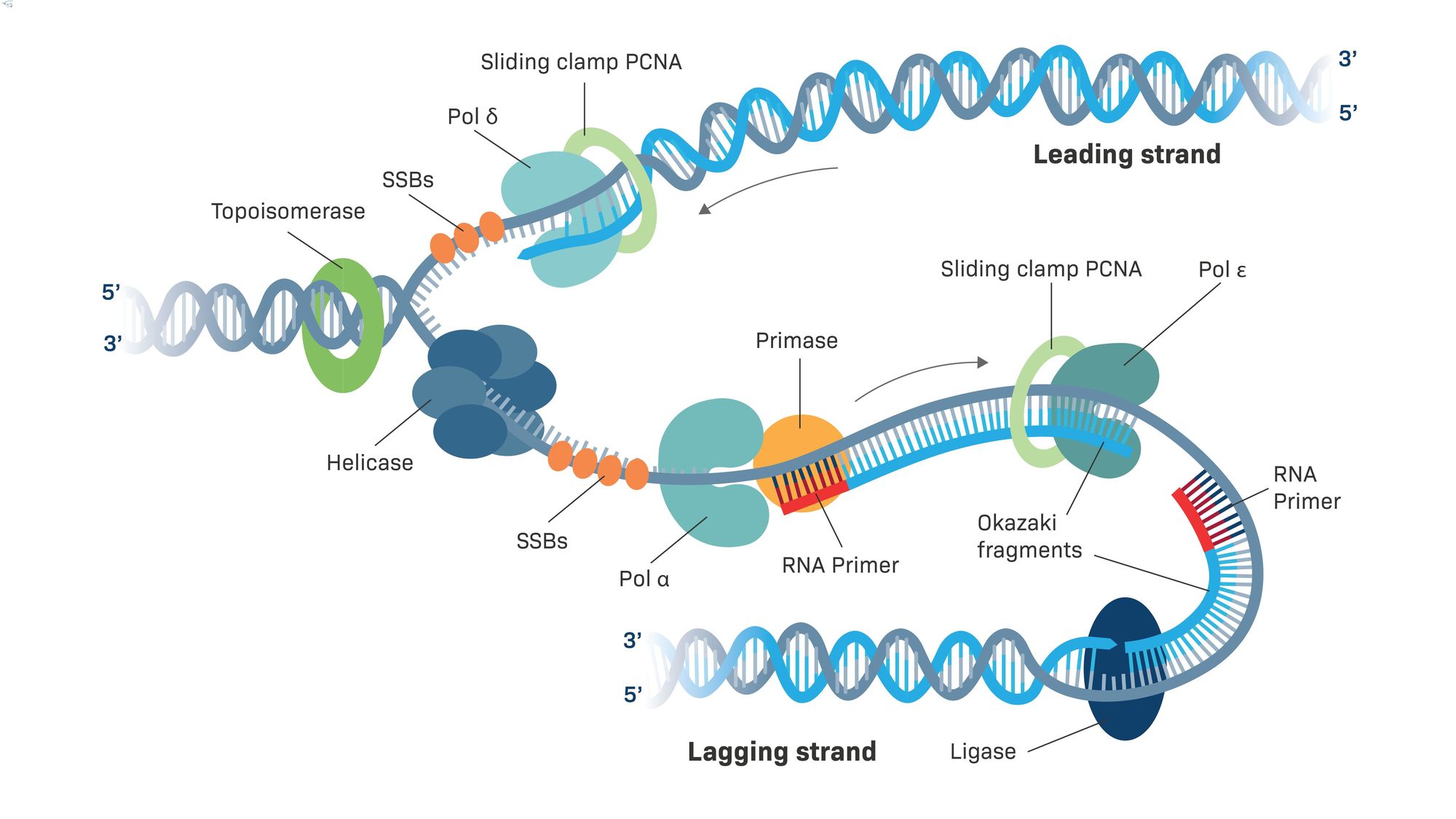
DNA ligase is a crucial enzyme in the world of genetics. It plays a key role in DNA replication and repair by joining DNA strands together. Imagine trying to fix a broken necklace; DNA ligase acts like the clasp that reconnects the chain. Without it, cells couldn't properly replicate or repair their DNA, leading to genetic chaos. This enzyme is vital for both natural cellular processes and various biotechnological applications. From cloning to gene therapy, DNA ligase is a silent hero in many scientific breakthroughs. Ready to dive into 50 fascinating facts about this indispensable enzyme? Let's get started!
Key Takeaways:
- DNA ligase is a crucial enzyme for DNA replication and repair, ensuring genetic stability. It has various functions and applications in biotechnology, medicine, and the study of genetic diseases.
- Understanding DNA ligase's role in cellular biology can lead to advancements in cancer therapy, personalized medicine, and the development of new antibiotics. Its versatility makes it a key player in genetic research and medical treatments.
What is DNA Ligase?
DNA ligase is an enzyme that plays a crucial role in DNA replication and repair. It works by joining DNA strands together, ensuring the integrity and continuity of genetic information. Here are some fascinating facts about DNA ligase:
-
DNA ligase is essential for DNA replication, as it seals nicks in the sugar-phosphate backbone of DNA.
-
This enzyme is also vital for DNA repair, fixing breaks that occur due to damage or during recombination.
-
There are different types of DNA ligases, including DNA ligase I, II, III, and IV, each with specific functions.
-
DNA ligase I is primarily involved in DNA replication.
-
DNA ligase III works mainly in DNA repair processes.
-
DNA ligase IV is crucial for the repair of double-strand breaks through non-homologous end joining (NHEJ).
-
DNA ligase II is a splice variant of DNA ligase III and has similar functions.
-
The enzyme uses ATP or NAD+ as a cofactor to form a phosphodiester bond between DNA strands.
-
DNA ligase was first discovered in 1967 by scientists at Stanford University.
-
The enzyme is highly conserved across different species, indicating its fundamental role in cellular processes.
How DNA Ligase Functions
Understanding how DNA ligase functions can provide insight into its importance in cellular biology. Here are some key points about its mechanism:
-
DNA ligase first binds to the nicked DNA strand.
-
It then undergoes a conformational change to activate the enzyme.
-
The enzyme uses ATP or NAD+ to form a covalent bond with the 5' phosphate group of the DNA.
-
This activation step creates a DNA-adenylate intermediate.
-
The enzyme then transfers the AMP to the 5' phosphate, creating a 5'-AMP intermediate.
-
Finally, DNA ligase catalyzes the formation of a phosphodiester bond, sealing the nick.
-
This process ensures that the DNA strand is continuous and stable.
-
DNA ligase activity is tightly regulated to prevent unwanted DNA joining.
-
Mutations in DNA ligase genes can lead to genetic disorders and increased cancer risk.
-
The enzyme is also used in molecular biology techniques, such as cloning and genetic engineering.
Applications of DNA Ligase in Biotechnology
DNA ligase has numerous applications in biotechnology and research. Here are some examples:
-
It is used in the creation of recombinant DNA molecules.
-
The enzyme is essential for the construction of DNA libraries.
-
DNA ligase is used in the process of ligase chain reaction (LCR), a method for detecting specific DNA sequences.
-
It plays a role in the synthesis of artificial chromosomes.
-
The enzyme is used in gene therapy to insert therapeutic genes into patient cells.
-
DNA ligase is crucial for the development of genetically modified organisms (GMOs).
-
It is used in the production of DNA vaccines.
-
The enzyme is employed in the study of DNA-protein interactions.
-
DNA ligase is used in the repair of DNA damage in vitro.
-
It is also used in the development of diagnostic tools for genetic diseases.
DNA Ligase in Medicine
The role of DNA ligase in medicine is expanding as researchers uncover more about its functions. Here are some medical applications:
-
DNA ligase is being studied as a target for cancer therapy.
-
Inhibitors of DNA ligase are being developed to treat bacterial infections.
-
The enzyme is used in the diagnosis of genetic disorders.
-
DNA ligase activity is a marker for certain types of cancer.
-
The enzyme is involved in the repair of DNA damage caused by radiation therapy.
-
DNA ligase is used in the development of personalized medicine.
-
It plays a role in the study of hereditary diseases.
-
The enzyme is used in the development of new antibiotics.
-
DNA ligase is involved in the repair of DNA damage caused by chemotherapy.
-
The enzyme is being studied for its role in aging and age-related diseases.
Interesting Facts About DNA Ligase
Here are some additional interesting facts about DNA ligase that highlight its importance and versatility:
-
DNA ligase can join both sticky and blunt ends of DNA.
-
The enzyme is used in the process of DNA fingerprinting.
-
DNA ligase is involved in the repair of telomeres, the protective ends of chromosomes.
-
The enzyme is used in the study of epigenetics.
-
DNA ligase is essential for the maintenance of genomic stability.
-
The enzyme is involved in the repair of DNA damage caused by UV light.
-
DNA ligase is used in the study of DNA replication mechanisms.
-
The enzyme is involved in the repair of DNA damage caused by oxidative stress.
-
DNA ligase is used in the study of DNA recombination.
-
The enzyme is essential for the survival of all living organisms.
The Final Word on DNA Ligase
DNA ligase plays a crucial role in the world of genetics. This enzyme is responsible for joining DNA strands together, making it essential for DNA replication and repair. Without it, cells couldn't properly replicate or fix damaged DNA, leading to genetic disorders and cell death.
Understanding DNA ligase helps scientists develop better treatments for genetic diseases and improve techniques in genetic engineering. It's fascinating how such a tiny enzyme can have such a massive impact on life as we know it.
So, next time you hear about DNA ligase, remember its importance in keeping our genetic code intact and functioning. This tiny enzyme is a true unsung hero in the world of biology, quietly working behind the scenes to ensure the continuity of life.
Frequently Asked Questions
Was this page helpful?
Our commitment to delivering trustworthy and engaging content is at the heart of what we do. Each fact on our site is contributed by real users like you, bringing a wealth of diverse insights and information. To ensure the highest standards of accuracy and reliability, our dedicated editors meticulously review each submission. This process guarantees that the facts we share are not only fascinating but also credible. Trust in our commitment to quality and authenticity as you explore and learn with us.


